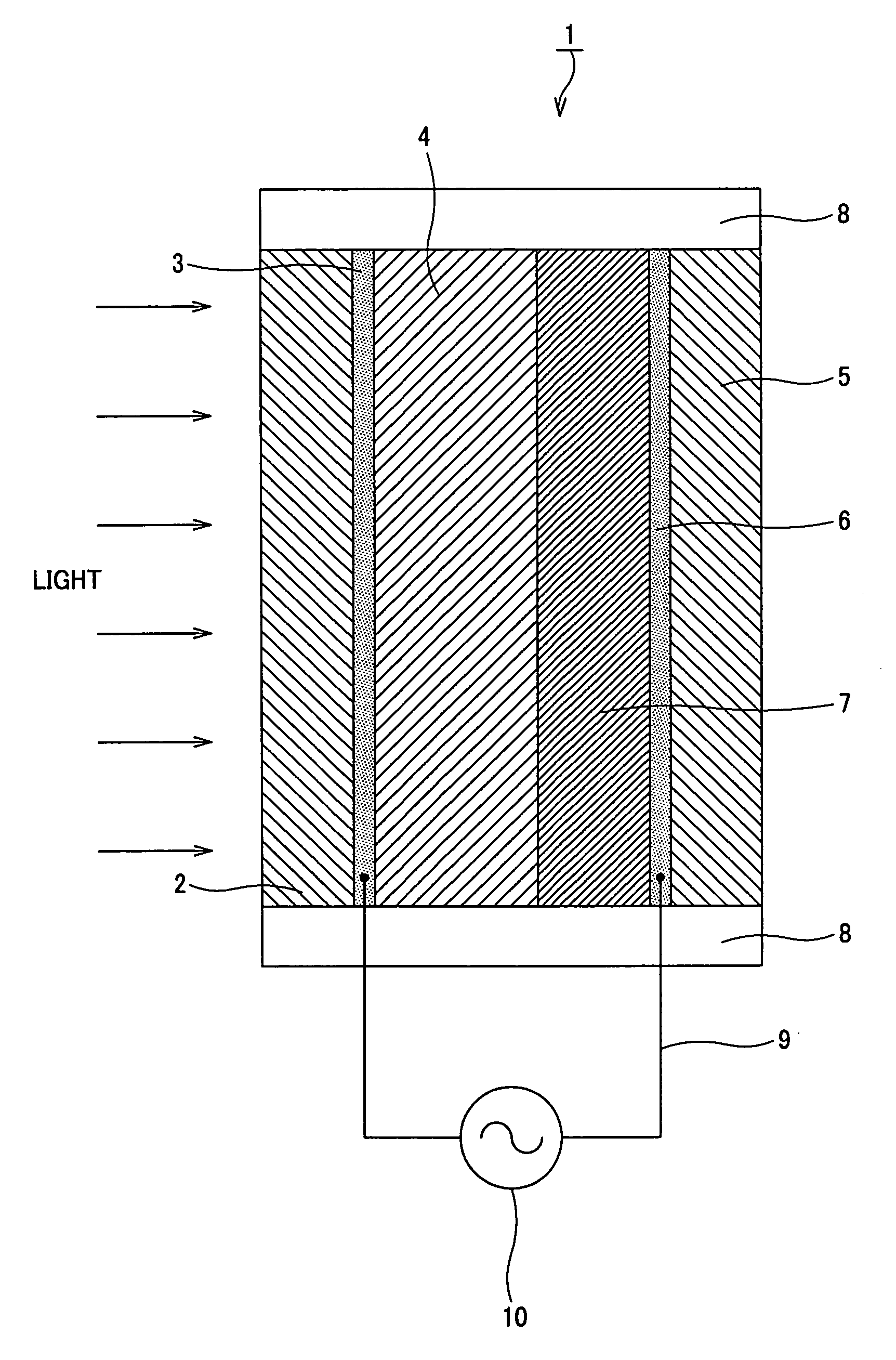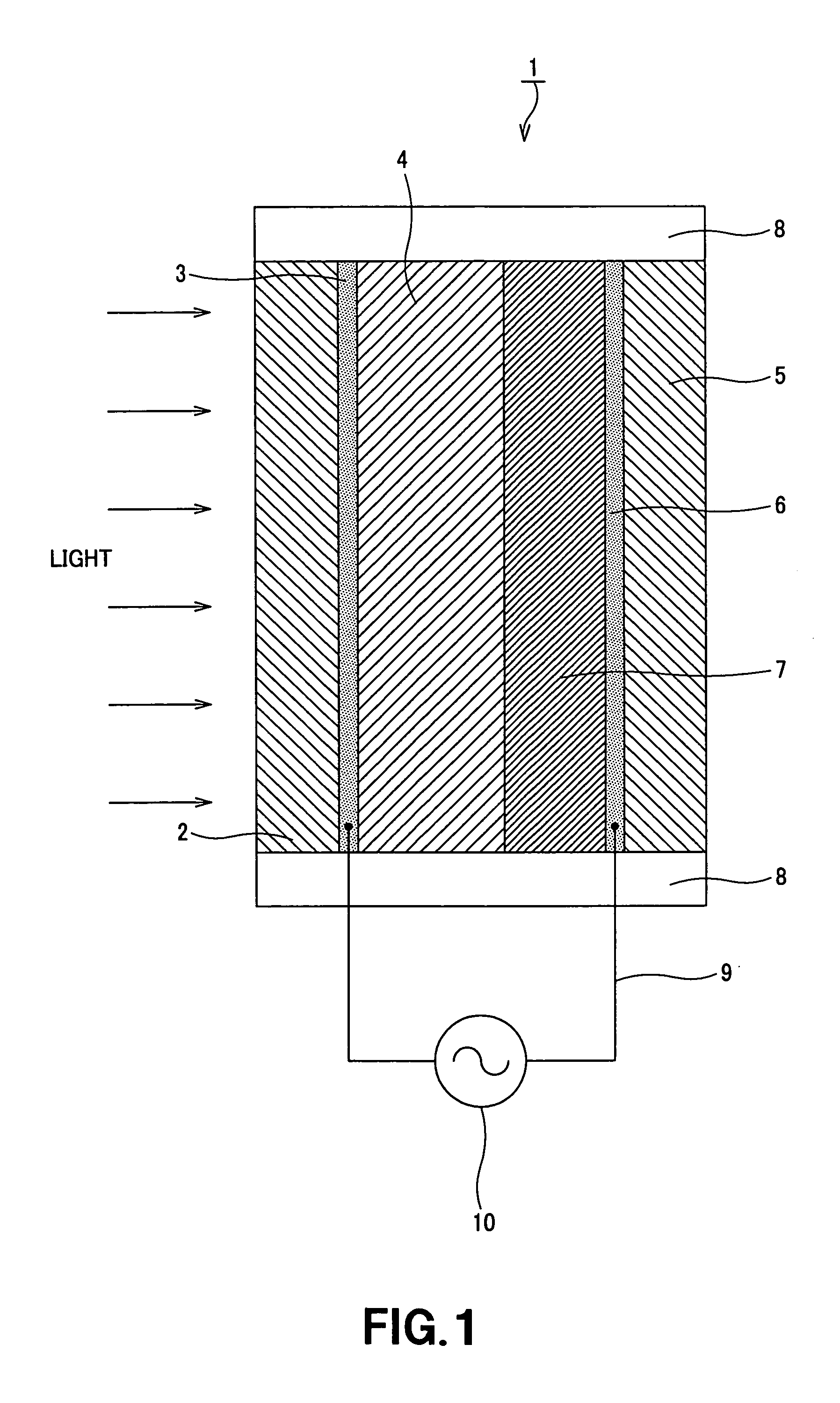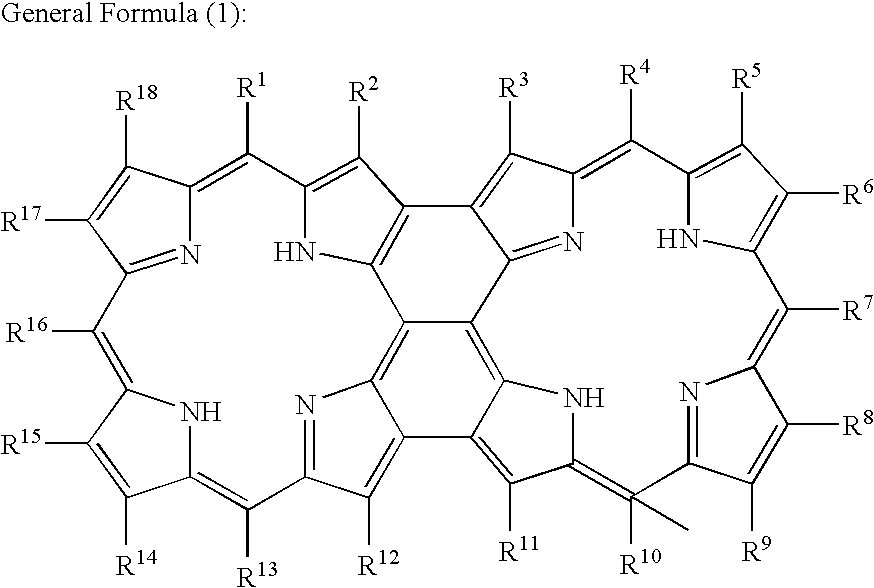Coloring matter sensitization type photoelectric conversion device
a dyeing matter sensitization and photoelectric conversion technology, applied in the direction of electrochemical generators, pulse techniques, instruments, etc., can solve the problems of low productivity of crystal silicon type solar cells, disadvantages in view of cost, and high energy burden, and achieve the effect of improving the efficiency of solar cells
- Summary
- Abstract
- Description
- Claims
- Application Information
AI Technical Summary
Benefits of technology
Problems solved by technology
Method used
Image
Examples
synthesis example 1
[0048] A measuring flask of 50 ml was used and meso-meso linked Zn(II)-diporphyrin compound (18 mg, 8 mmol) was dissolved in toluene of 30 ml. 2,3-dichloro-5,6-dicyano-1,4-benzoquinone (refer it to as DDQ, hereinafter: 9 mg, 40 mmol) as an oxidizing agent was added to scandium trifluoromethane sulfonate (refer it to as Sc(OTf)3 hereinafter: 20 mg, 40 mmol). The mixed solution was circulated for one hour. The mixture was diluted with methanol and tetrahydrofuran (THF). The solvent was removed by a rotary evaporator to dissolve a product in the THF and pass an alumina column. After that, the product was recrystallized by benzene / acetonitrile. Thus, a planar porphyrin dimer (12.9 mg, yield of 86%) was obtained which was connected by a total of three bonds including a meso-meso bond that two porphyrin rings are bonded together by carbons at meso positions, and two β-β bonds connected to the meso-meso bond by carbons at β positions adjacent to the meso-meso bond.
[0049] When the 1H-NMR s...
synthesis example 2
[0050] The planar zinc porphyrin dimer (compound (A)) obtained as described above was demetalized by concentrated sulfuric acid and trifluoroacetic acid so that a planar metal-free porphyrin dimer could be obtained.
[0051] When the 1H-NMR spectrum, the UV-Vis spectrum, the MALDI-TOF MAS spectrum of this compound were examined, a planar porphyrin dimer was recognized in which R1, R4, R10 and R13 in the general formula (1) indicated 4-carboxyphenyl groups and the others indicated hydrogen atoms. The planar porphyrin dimer obtained as described above is referred to as a compound (B), hereinafter.
synthesis example 3
[0052] A measuring flask of 50 ml was used and meso-meso linked Zn(II)-hexaporphyrin compound (30 mg, 4.7 mmol) was dissolved in toluene of 50 ml. DDQ (27 mg, 120 mmol) as an oxidizing agent was added to Sc(OTf)3 (60 mg, 120 mmol). The mixed solution was circulated for one hour. The mixture was diluted with methanol and THF. The solvent was removed by a rotary evaporator to dissolve a product in the THF and pass an alumina column. After that, the product was recrystallized by benzene / acetonitrile. Thus, a planar porphyrin hexamer (18.5 mg, yield of 62%) was obtained which was connected by a total of three bonds including a meso-meso bond that six porphyrin rings are bonded together by carbons at meso positions, and two β-β bonds connected to the meso-meso bond by carbons at β positions adjacent to the meso-meso bond.
[0053] When the 1H-NMR spectrum, the UV-Vis spectrum, the MALDI-TOF MAS spectrum of this compound were examined, a planar metallic porphyrin hexamer was recognized in w...
PUM
 Login to View More
Login to View More Abstract
Description
Claims
Application Information
 Login to View More
Login to View More - R&D
- Intellectual Property
- Life Sciences
- Materials
- Tech Scout
- Unparalleled Data Quality
- Higher Quality Content
- 60% Fewer Hallucinations
Browse by: Latest US Patents, China's latest patents, Technical Efficacy Thesaurus, Application Domain, Technology Topic, Popular Technical Reports.
© 2025 PatSnap. All rights reserved.Legal|Privacy policy|Modern Slavery Act Transparency Statement|Sitemap|About US| Contact US: help@patsnap.com



